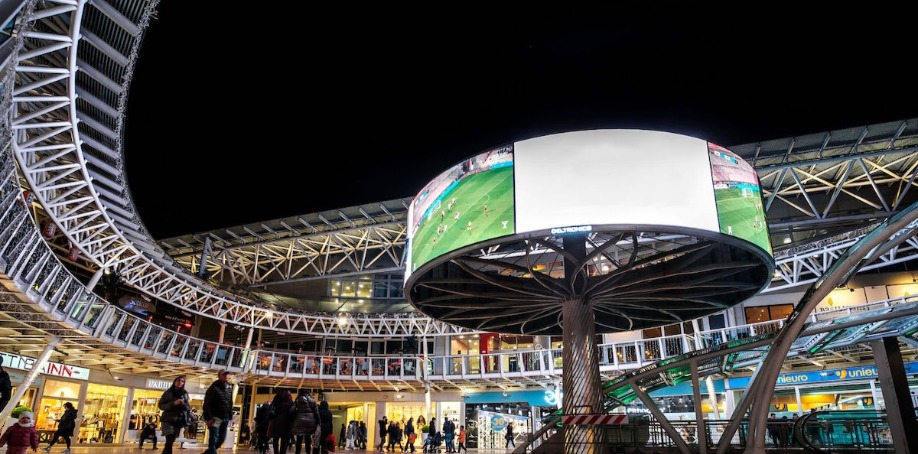
The rise of Ethernet, cloud computing and the Internet of Things (IoT) made automated buildings a logical reality. Today, many facilities' mechanical, safety and security, lighting, and ventilation systems are controlled through a building management system (BMS) or a building automation system (BAS).
These systems typically connect to the building's Ethernet infrastructure, allowing facilities managers to access them via computer. BAS manufacturers and installers like Cisco cite many of the same advantages that AV over IP integrators offer:
- Connectivity through existing Ethernet channels
- The ability to sync and control infinite data points
- Improved real-time data transmission
- Centralized control through a single intuitive visual interface
Today, many integrators' clients want to have it all: a fully automated building with superior AV systems. Here's how AV over IP systems can be built to “play nice” with automated building technologies — and how to sell the benefits of both systems to facilities managers and decision-makers.
BAS 101: How Do Building Automated Systems Work?
Building automation systems seek to combine all of a buildin's functions into a single system. The system both controls the buildin's functions (heat, lighting, ventilation, security) and gathers data, which allows it to track how the building is used and to adapt its commands to various building functions for maximum efficiency, according to Control Solutions.
AV over IP became feasible in the 1990s, according to Mark Mayfield, at about the same time facilities managers began embracing digital upgrades to the analog systems they'd used to integrate building functions during most of the 20th Century. Both facilities management and AV integration began to move away from proprietary system components with their own specific infrastructure demands and toward tools that worked over a single building network.
Today, the move to Ethernet-based, IP-supported tools in both spheres is reflected in how humans access them. To the end user, an IP-based BAS looks similar to an AV over IP interface: a visual display offers access to the various parts of the system, which can be controlled or monitored from that interface.
A well-designed, well-implemented BAS offers tremendous energy and cost savings. By allowing the system to monitor factors like building occupancy and use, facilities managers can leverage the power of the system's analytics to control lighting, heating and cooling, and other factors much more closely than human observation can, according to Fusion Commercial AV. The system can respond to small changes that add up to big savings.
A poorly-designed or poorly-implemented BAS costs money, too. A report for the National Technical Information Service (NTIS) estimates that 20 percent of the energy used in US businesses today is spent on automated building systems — and that, with better implementation, this number could be reduced by as much as 12 percent.

AV Over IP and Automated Building Tools: A Strong Team For Facilities Managers
For many years, managing a building's interior comfort and managing the use of audiovisual tools within that space were two separate spheres. As both building management tools and AV tools move onto the same internal network and rely on IP to function, however, facilities managers and integrators alike are finding creative ways to merge their domains of expertise.
Smart Buildings for Smarter Savings
Energy pressures and climate change are pushing many companies toward automated systems that offer smart control of resources. Carolyn Heinze at AVNetwork takes this revolution one step further, arguing that AV integration is essential to smart building technology.
Heinze notes, for example, that a smart building that “knows” when to warm up a room, turn on the lights, or drop the window shades can “learn” how to prepare AV equipment for a scheduled meeting, as well. Tools like Power over Ethernet (PoE) devices can also help control energy costs without sacrificing functionality, notes NPI Connect.
JLL Smart Building Program senior consultant Michael Carter agrees. AV isn't just about delivering images or video to a display or connecting conference calls, he tells Heinze. Instead: “AV is about communications and collaboration. It's important to think about AV as a core communications tool within the framework of an enterprise.”
By thinking of AV as another tool on an automated building's network, integrators can spot opportunities to use their own expertise to support a client's needs. Integrators can also find ways to make the system work well within the company's internal culture, creating a system that enhances already-successful approaches.
Integrating Interfaces
AV over IP puts audiovisual systems on the same building network as computers, tablets, HVAC and lighting systems — which creates the opportunity to offer a single interface to manage all of these functions.
Companies like AdvanceTechnology have seized this opportunity, offering tools like single user interfaces that can manage both automated building functions and audiovisual tools. Interfaces in different areas of the building can also be customized for use. For example, facilities managers can provide access to AV tools, lighting and window controls in meeting rooms, but reserve control over other systems for authorized staff.
One of the largest mental loads on staff is the need to learn their workspace's tools. When interfaces are aligned, the amount of information staff must remember in order to use workspace tools drops, freeing them to focus on their own work. This increased productivity can be a major selling point for companies considering integrator bids.
Security Systems
Stakeholders who seek bids from integrators are often thinking on the automated room or microenvironment level. Many AV over IP projects stay at this level, focusing on automating the components of a single room under a single interface (often located in the room itself) rather than automating an entire building under a centralized control unit. Conference rooms, classrooms and museum exhibits are three common examples of the automated room model.
However, many facilities are finding new uses for a system that allows for AV access and control anywhere in the building, integrated into a single facilities management interface.
One of the first systems to benefit from these innovations was security. Security systems have long relied on audiovisual components like microphones, cameras and closed-captioned television (CCTV) systems. An AV over IP-based system can efficiently stream, record and analyze security data; alert security personnel or law enforcement; and take other steps that traditional systems cannot.
Systems are no longer limited to a finite number of devices or a particular security closet or other location in the building. “Sources can be 'any' and 'many.'" says Cherub Availability Services CTO and co-founder Brian McCarthy. “And destinations can be 'any' and 'many.'”
Integrators who wish to talk security with the managers of automated buildings can adapt more readily to the project's specific needs, rather than forcing building managers and security teams to adapt to the limitations of the technology.
IT Security and AV Over IP
Whether or not a project focuses on building security, integrators should consider digital and online security, as well. Because AV over IP systems exist on the network, they can become the weak point in a hacking or fraud scheme, notes Atlona business development manager Michael Crisci. “The technology itself has to align with the stringent security requirements that exist within an enterprise environment,” Crisci tells AVNetwork, “Otherwise you're not going to see it matriculate through that environment.”
Internet of Things (IoT) security is a growing concern. “History shows that most fast-growth technology solutions focus on solving business problems first; security is an afterthought,” Mandeep Khera writes at Security Intelligence.
This means that devices on a network, like videowalls or sound systems, create weak points that can be exploited. And when an AV system is integrated into an automated building, it can become the weak point that gives nefarious parties access to the entire building.
Security expert Bruce Schneier notes that data breaches cost an average of $3.8 million each, and that's only the beginning of the damage they can cause. Integrators who are prepared to answer facilities and IT managers' security concerns stand a better chance of landing bids with their preferred clients.

AV over IP and Automated Buildings: Adaptability For the Future
Much energy has been spent in technological research, seeking ways to make the tools we use as adaptable and intuitive as we are. Including AV systems on a building's smart network is one way to bring these traits to the next level, making the tools easier for human users and more effective for the overall health and efficiency of the workspace.
Images by: nexusplexus/©123RF Stock Photo, neirfy/©123RF Stock Photo, lucalorenzelli/©123RF Stock Photo


